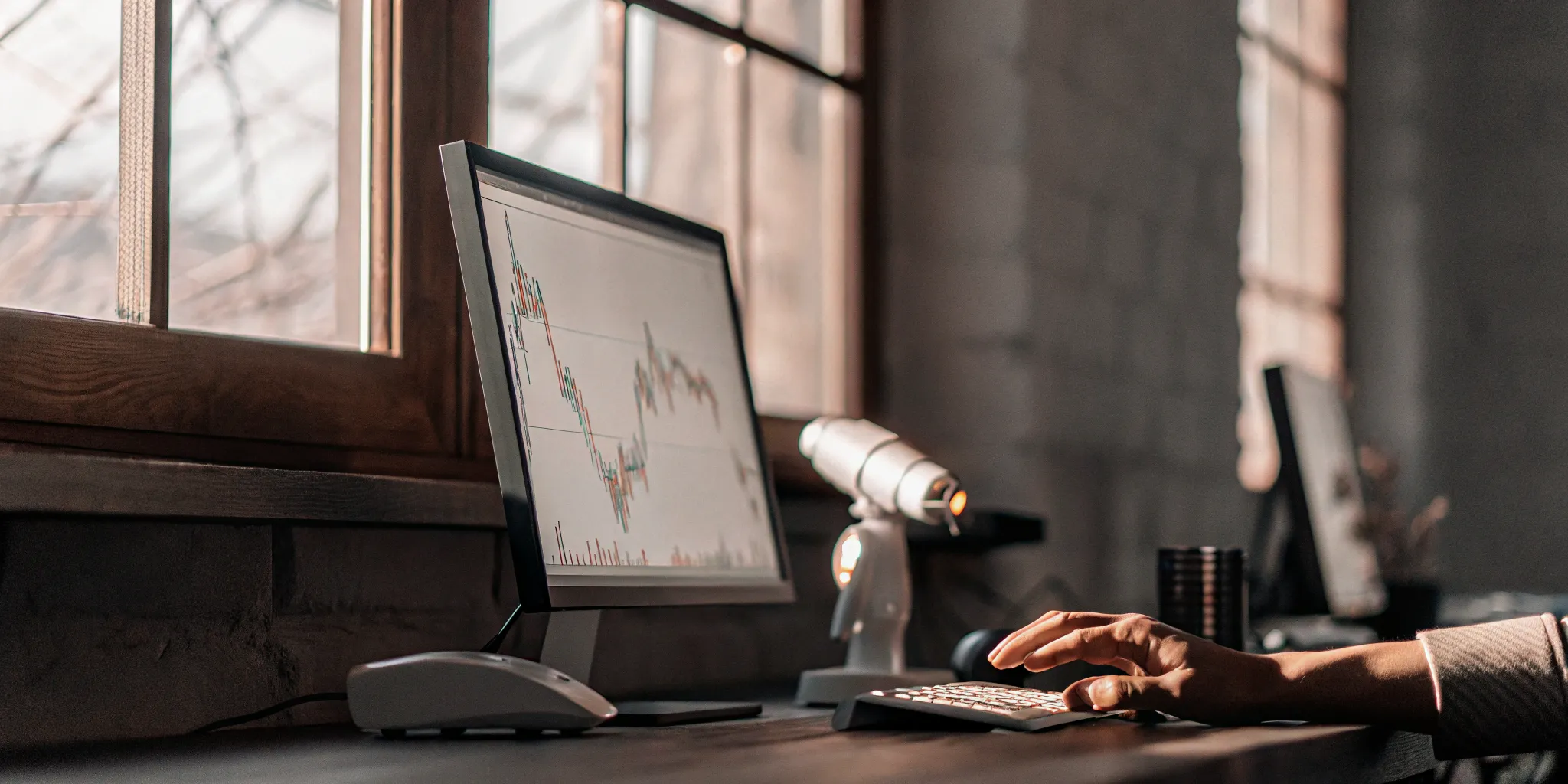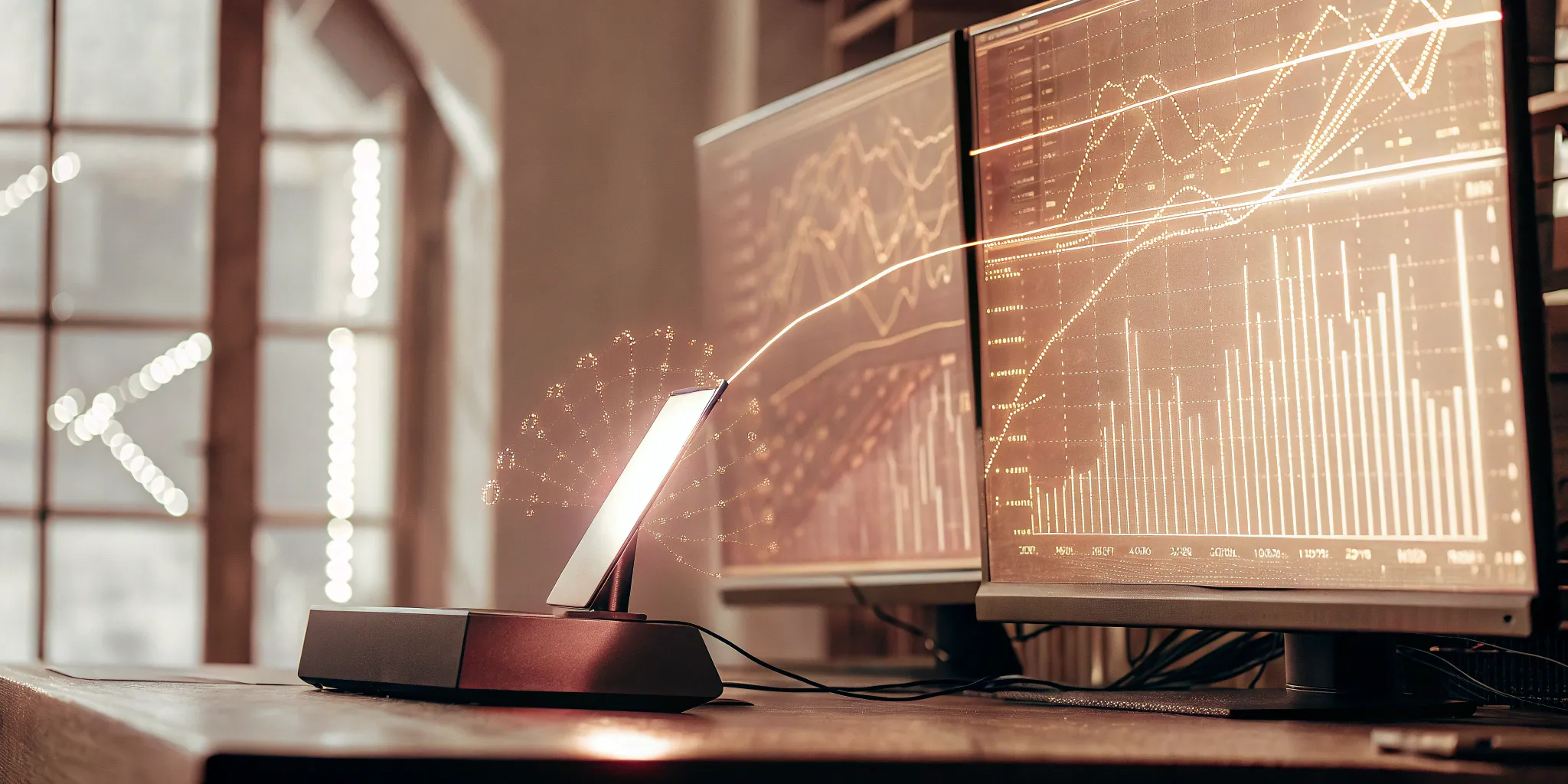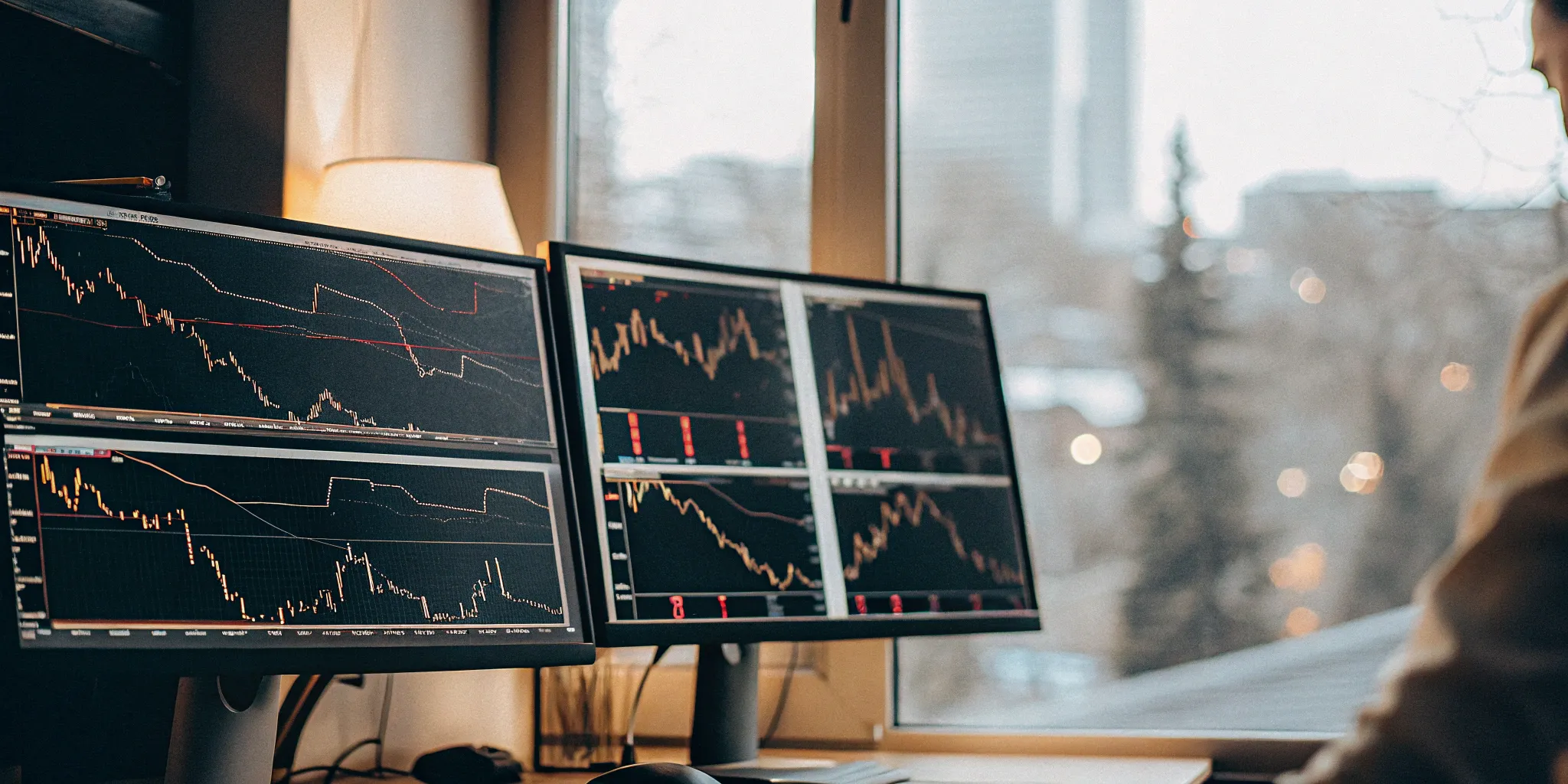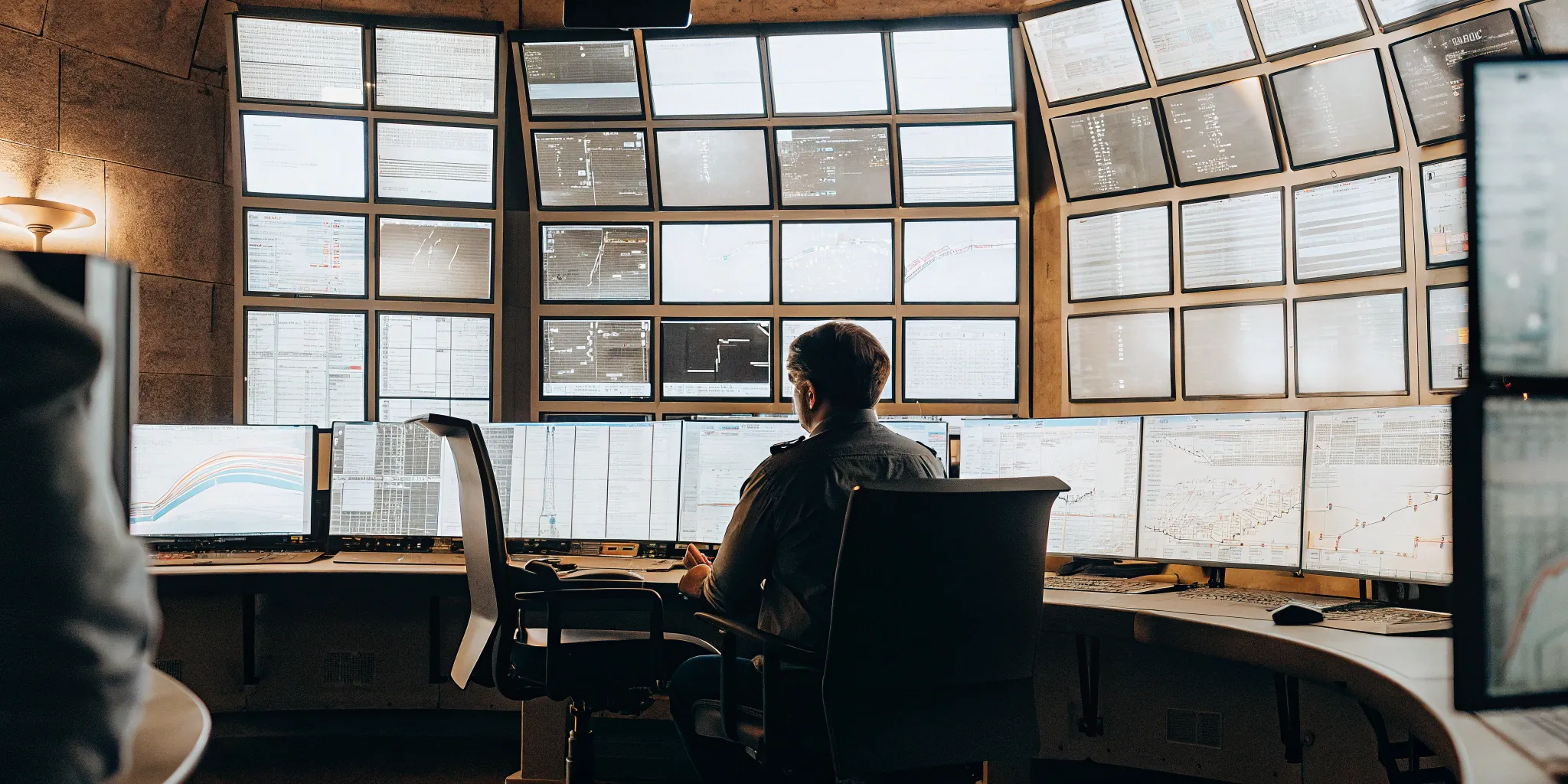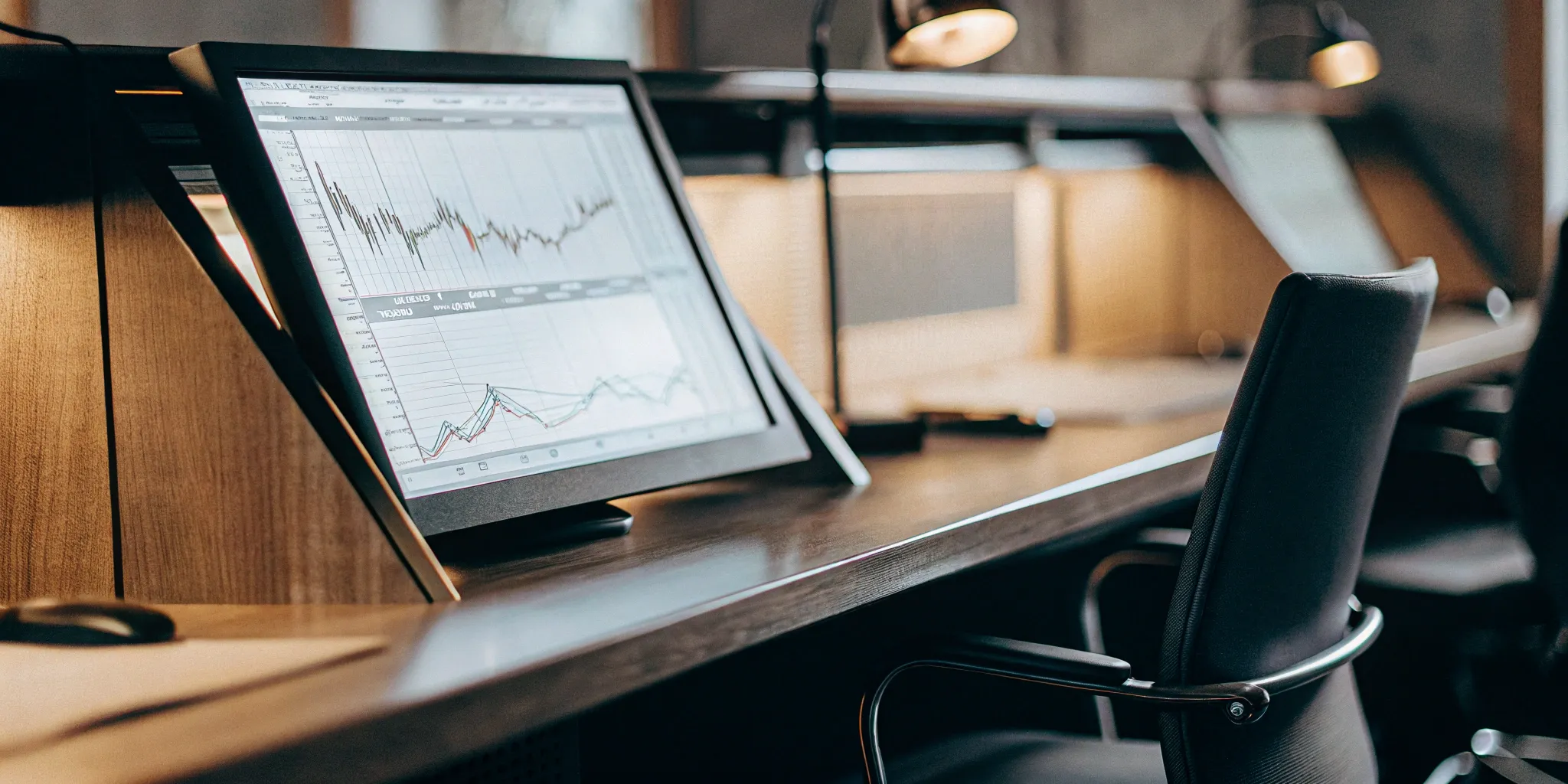Tired of emotional rollercoasters dictating your trading decisions? Wish you could react to market changes faster than humanly possible? Automated trading might be the game-changer you’ve been searching for. This comprehensive guide explores the ins and outs of automated trading, demystifying its core components and highlighting the benefits of automated trading. We’ll cover everything from setting up your first automated system to managing risk effectively and adapting to different market conditions. Join us as we unlock the potential of automated trading and show you how to make it work for you.

Key Takeaways
- Automated trading empowers informed decisions: By removing emotional bias and executing trades rapidly, these systems enhance efficiency and open up 24/7 market access. Regular monitoring and adaptation are crucial for optimal performance.
- Backtesting and risk management are your allies: Testing strategies with historical data and using tools like stop-loss orders are essential for protecting capital. Automated trading isn’t “set it and forget it”—stay actively involved.
- Choose the right platform and never stop learning: Select a platform that fits your needs and continuously refine your strategies. Stay informed about regulatory changes and explore advancements like AI and machine learning to maximize your potential.
What is Automated Trading? How Does it Work?
Automated trading, often called algo trading, uses computer programs to buy and sell assets based on predefined rules. Think of it as setting your trading decisions on autopilot. These programs, called algorithms or algos, execute trades automatically when specific market conditions are met. This removes human emotion and delays from the equation. Instead of manually clicking buy or sell, your system follows your strategy precisely, no matter what’s happening in the market. This can be especially helpful in fast-moving markets where split-second decisions can make all the difference. As Tradestation explains, automated trading relies on instructions to place trades, making it systematic and rule-based.
Key Components of Automated Trading Systems
Automated trading systems rely on several key components working together seamlessly. First, you need a trading algorithm, which is the set of rules that dictates your trading strategy. This could be based on technical indicators, fundamental analysis, or a combination of factors. Next, you’ll need a platform to execute your trades. This could be a brokerage platform that offers API access or specialized automated trading software. Reliable market data is also essential, as your algorithm needs accurate information to make informed decisions. Finally, a robust risk management system is crucial to protect your capital. This might include stop-loss orders, position sizing rules, and other safeguards. Successful systems require agility, flexibility, and robust monitoring.
How Automated Trading Executes
Automated trading systems execute trades with speed and precision. Once your algorithm identifies a trading opportunity based on your predefined rules, it sends an order directly to the market. This eliminates the delays associated with manual trading, allowing you to capitalize on fleeting opportunities. Automated systems perform tasks consistently, reducing human errors like accidental trades. This precision ensures you don’t miss opportunities, even in volatile markets. The system continuously monitors market conditions and executes trades according to your strategy, 24/7. Platforms like TruTrade highlight the benefits of automated execution in capturing market opportunities.
Top Benefits of Automated Trading
Automated trading systems offer several advantages that can significantly improve your trading performance. Let’s explore some of the key benefits:
Execute Trades Quickly and Efficiently
Speed is often crucial in trading. Automated systems execute trades far faster than any human, handling a large volume of orders across multiple markets simultaneously. This speed advantage allows you to capitalize on fleeting opportunities and manage more positions efficiently. Automated systems react instantly to market changes, which can be the difference between a profitable trade and a missed opportunity. This rapid execution is especially valuable in volatile markets where prices can fluctuate dramatically in short periods. This speed and efficiency allows traders to access more markets and manage a higher volume of trades, which, for active traders, can translate to more potential profits.
Implement Strategies Consistently and Disciplinedly
One of the biggest challenges in trading is maintaining discipline. Emotions like fear and greed can lead to impulsive decisions that deviate from your trading plan. Automated systems remove this emotional element, executing your predefined strategies with unwavering consistency. They adhere to your rules without hesitation, eliminating costly human errors like accidental order entries or “fat finger” mistakes. This consistent execution ensures that your trading plan is followed precisely, regardless of market conditions or personal biases. This reliability also translates to better service for clients who rely on consistent and predictable trading outcomes.
Eliminate Emotional Bias
We’re all susceptible to emotional biases that can negatively impact our trading decisions. Fear can cause us to sell too early, while greed might lead us to hold on to losing positions for too long. Automated trading systems eliminate these emotional pitfalls. They make decisions based on pre-programmed logic and data analysis, not on gut feelings or emotional impulses. This objective approach helps you avoid costly mistakes driven by fear, greed, or other emotional biases. By removing emotional influences, automated systems promote more rational and disciplined trading.
Diversify and Access Multiple Markets
Diversification is a cornerstone of sound risk management. Automated systems make it easier to diversify your portfolio across different asset classes, markets, and trading strategies. They can monitor and execute trades across multiple markets simultaneously, something that would be incredibly difficult for a human trader to manage effectively. This broad reach allows you to access a wider range of opportunities and reduce your overall portfolio risk. Furthermore, automated systems can easily incorporate risk management tools, such as stop-loss orders, to protect your capital. This ability to diversify and manage risk effectively is a major advantage of automated trading.
Monitor and Participate in Markets 24/7
Global markets operate around the clock. Automated trading systems allow you to participate in these markets 24/7, even while you’re sleeping or attending to other commitments. Your computer can monitor market movements and execute trades according to your predefined rules, regardless of the time of day or your location. This continuous monitoring and participation can be particularly beneficial in the forex market, which is open 24 hours a day, five days a week. This constant presence in the market ensures that you never miss a potentially profitable opportunity. Automated systems can react to news events and market fluctuations that occur outside of traditional trading hours, giving you an edge in today’s fast-paced markets.
Backtesting: Refine Strategies with Historical Data
Imagine testing your trading strategy with a time machine. That’s essentially what backtesting allows: simulating trades against historical market data to gain valuable insights into how your automated system would have performed in the past. This knowledge is crucial for refining your algorithms and avoiding potential losses before risking real capital.
Why Thorough Backtesting is Important
Backtesting is a cornerstone of developing robust automated trading systems. It offers a way to validate the effectiveness of your strategies using historical data, empowering you to make informed decisions before live trading. Think of it as a dress rehearsal for your trading strategy. Just as a theater production benefits from a practice run, backtesting lets you identify and fix potential issues before they impact live performance. This process helps you avoid costly mistakes and increases the likelihood of success in real-world markets. Quantified Strategies emphasizes the importance of backtesting for avoiding bad strategies before they lead to actual losses. Thorough backtesting helps you understand how your strategy would have reacted to various market conditions, from periods of high volatility to calmer, more predictable trends. This insight is invaluable for building confidence in your system’s ability to navigate different market scenarios. Aim2019 highlights its role in validating trading strategies and making data-driven adjustments.
Fine-tune Algorithms Before Live Deployment
Backtesting isn’t just about identifying flawed strategies; it’s a powerful tool for optimization. By analyzing the results of your backtests, you can fine-tune your algorithms and improve their performance. Think of your automated trading system as a finely tuned instrument. Backtesting allows you to adjust the settings and ensure every component works in harmony. You can tweak parameters, refine entry and exit rules, and adjust risk management settings based on historical performance. uTrade Algos points out how backtesting helps refine automated systems and optimize algorithms based on past market conditions. This iterative process helps you create a more robust and efficient system. TruTrade reinforces this idea, emphasizing that thorough backtesting helps identify weaknesses in algorithms and make necessary adjustments before live trading. By using historical data as your testing ground, you can significantly increase the chances of your automated system achieving its goals in the live market.
Manage Risk in Automated Trading
Risk management is paramount in any trading strategy, and automated trading is no exception. While automation can remove emotional decision-making, it’s crucial to build safeguards into your system to protect your capital.
Implement Effective Stop-Losses and Take-Profits
One of the most fundamental risk management tools is the stop-loss order. A stop-loss automatically exits a trade when a predetermined price level is reached, limiting potential losses. Similarly, take-profit orders lock in profits by automatically selling when a specified profit target is hit. Automated trading systems excel at implementing these orders with precision and speed, ensuring your trades are managed efficiently. For a deeper dive into how automated systems handle these orders, check out this article on automated trading.
Size Positions and Allocate Portfolios Smartly
Position sizing and portfolio allocation are critical aspects of risk management. How much capital you allocate to each trade significantly impacts your overall risk exposure. Automated systems can analyze historical trade data and current market conditions to forecast the potential impact of each trade, helping you size your positions appropriately. Diversification is another key element. Automated trading allows you to easily spread your investments across different assets, reducing the impact of any single trade on your overall portfolio. Learn more about how automated systems analyze historical data for smarter allocation.
Customize and Adapt Automated Systems
One of the most significant advantages of automated trading systems is their flexibility. You’re not locked into a rigid approach. Instead, you can tailor your automated systems to fit your specific goals and adapt to changing market dynamics.
Adapt Strategies to Various Market Conditions
Markets are constantly in flux. What works in a bullish trend might falter in a bearish one. Automated trading systems can be programmed to adapt to these shifts in real time. This allows you to modify your strategies based on current data and market trends, maintaining effectiveness even in volatile markets. This adaptability ensures you can respond promptly to new information and market dynamics, keeping you ahead of the curve. Think of it as having a trading assistant that constantly adjusts to the prevailing winds, ensuring your sails are always set for optimal performance.
Incorporate Multiple Trading Approaches
Diversification is a cornerstone of smart investing. Automated trading allows you to build diversified portfolios and incorporate various trading strategies simultaneously. This can be a powerful tool for managing risk and capitalizing on different market opportunities. Perhaps you want to combine a trend-following strategy with a mean-reversion approach. With automated trading, you can execute both strategies seamlessly, potentially enhancing your profit potential while mitigating the risks of relying on a single approach. This multi-faceted approach allows you to cast a wider net, capturing gains from various market conditions.
Common Misconceptions about Automated Trading
Automated trading systems offer exciting possibilities, but it’s important to approach them with realistic expectations. Let’s clear up some common misconceptions surrounding automated trading.
Debunking the Myth of Guaranteed Success
One of the biggest misunderstandings about automated trading is the idea that it guarantees profits. No trading system, automated or otherwise, can promise a 100% win rate. Markets are inherently unpredictable, influenced by countless factors. While a well-designed automated system can execute trades quickly and efficiently, it’s not a magic bullet. Success in trading, whether manual or automated, requires careful strategy development, risk management, and ongoing adaptation to changing market conditions. Automated systems are tools to help you implement your strategies more effectively, not a shortcut to guaranteed riches.
The “Set It and Forget It” Fallacy: Why It’s Wrong
Another misconception is that automated trading is a “set it and forget it” endeavor. While automation takes care of trade execution, it doesn’t eliminate the need for active oversight. Regularly monitoring performance is crucial to ensure your system is functioning as intended and adapting to market changes. Think of it like a self-driving car—while it can handle many driving tasks, you still need to pay attention to the road and be ready to take control if necessary. Similarly, automated trading systems require ongoing monitoring and adjustments to stay aligned with your goals and risk tolerance. Market conditions shift, and your automated system needs to adapt accordingly.
Avoid Overestimating System Capabilities
Finally, it’s important to avoid overestimating the capabilities of your automated trading system. While these systems can process vast amounts of data and execute trades with incredible speed, they are still based on predefined rules and algorithms. They can’t anticipate every market movement or account for every unforeseen event. Understanding the limitations of your system is key to managing risk and avoiding unrealistic expectations. Automated systems are powerful tools, but they are not infallible. They are designed to execute your strategies, not to replace your judgment and understanding of the market.
Monitor and Manage Automated Trading Systems
Automated trading systems, while designed for efficiency and consistency, aren’t entirely “set it and forget it.” Regular monitoring and management are crucial for long-term success. Think of it like a high-performance car—even with advanced automation, you still need regular tune-ups and check-ups to keep it running smoothly.
Check Performance Regularly
Regular performance checks are your first line of defense. This involves consistently reviewing key metrics like trade frequency, win/loss ratios, and overall profitability. Automated systems can drift over time as market conditions change, so these checks help ensure your strategy remains aligned with your goals. Look for any unusual patterns or significant deviations from expected performance. These could indicate a flaw in your system’s logic or a shift in market dynamics. Regular performance reviews also allow you to identify and capitalize on emerging opportunities or adjust your approach during periods of market volatility. For example, FN Capital’s verified 4-year track record demonstrates the importance of consistent monitoring and transparency in automated trading.
Handle Technical Issues and System Failures
Even the most robust automated systems can experience technical glitches or outright failures. Internet outages, software bugs, or issues with your brokerage connection can disrupt trading and potentially lead to losses. Having contingency plans in place is essential. This might include backup internet connections, redundant systems, or manual intervention protocols for critical situations. Be prepared to quickly diagnose and address technical problems to minimize their impact. Remember, automated systems aren’t completely hands-off; they require active oversight to ensure smooth operation. FN Capital addresses this through its DART (Dynamic Algorithmic Risk Tool), which provides real-time risk management and adaptation to changing market conditions.
Avoid Over-Optimization and Curve-Fitting
Over-optimization and curve-fitting are common pitfalls in automated trading. Over-optimization involves tweaking your system to perfectly match historical data, often to the point where it performs exceptionally well in backtests but poorly in live trading. Curve-fitting is a similar concept, where your system becomes so tailored to past market behavior that it fails to adapt to new conditions. Strive for a balance between optimization and robustness. Focus on developing strategies that perform well across a range of market scenarios, rather than chasing perfect historical results. Stress testing your algorithms with various market conditions can help identify potential weaknesses and prevent overfitting. Regulations like MiFID II RTS 6 in Europe now require this type of testing to ensure the stability and reliability of automated trading systems. FN Capital’s focus on trading the highly liquid EUR/USD pair further mitigates risks associated with slippage and volatility, contributing to more robust and reliable performance.
Get Started with Automated Trading
So, you’re ready to explore automated trading? Here’s how to begin.
Choose the Right Platform and Tools
Finding the right automated trading platform is your first step. Automated trading platforms offer several advantages, increasing efficiency and profitability. They help eliminate emotional decision-making, execute trades faster, and provide advanced tools for building and executing your strategies. This empowers you to make smarter, data-driven choices. Look for platforms like TruTrade that offer advanced technology for fast execution, risk management, and consistent trading. Consider factors like ease of use, available features (such as charting, backtesting, and various order types), and cost. Some platforms cater to beginners, while others suit more experienced traders. Choose one that aligns with your skill level and trading goals.
Develop and Test Your First Strategy
Before live trading, it’s crucial to develop and thoroughly test your automated trading strategy. A basic understanding of market mechanics, order types, and core trading concepts is essential. This knowledge will inform how you design and operate your automated system. A successful trading bot relies heavily on well-defined parameters and clear objectives, as The Data Scientist points out. Automated trading uses a computer program that follows a defined set of instructions (an algorithm) to place trades. These instructions are typically based on factors like timing, price, and quantity, and can be combined to create complex mathematical models. TradeStation offers a good overview of this process. Start with a simple strategy and gradually increase complexity as you gain experience. Backtesting, which we’ll discuss later, is critical for refining your strategies before deploying them in live markets. Automated trading systems let you set predefined parameters, enabling you to execute trades based on specific criteria without constant monitoring, as explained by AI Trading Indicator.
The Future of Automated Trading
The world of automated trading is constantly evolving, driven by technological advancements and regulatory changes. Understanding these trends is key to maximizing your potential in this dynamic landscape.
Integrate AI and Machine Learning
Integrating artificial intelligence and machine learning is transforming how automated trading systems operate. AI-powered systems can analyze vast amounts of historical data, identifying complex patterns and trends that would be impossible for humans to detect. This allows for more sophisticated trading strategies that can adapt to changing market conditions in real time. Imagine a system that automatically adjusts its approach based on news sentiment or economic indicators. This level of responsiveness and adaptability is crucial in today’s fast-paced markets. AI and machine learning also empower systems to refine their strategies through continuous learning, constantly improving their accuracy and efficiency.
Regulatory Considerations and Compliance
As automated trading becomes more prevalent, regulatory oversight is also increasing, which helps ensure market integrity and protects investors. Automated systems can be designed to adhere to all applicable laws and regulations, providing a clear audit trail and minimizing compliance risks. Regulations like MiFID II RTS 6 in Europe now mandate stress testing of algorithms. This proactive approach helps identify potential vulnerabilities and ensures that automated trading systems operate within a safe and compliant framework. Staying informed about evolving regulatory requirements is essential for anyone involved in automated trading.
Save Time and Money with Automated Trading
Automated trading systems, like our own FAST AI, offer significant advantages when it comes to both your time and your finances. Let’s explore how these systems can streamline your trading process and potentially boost your bottom line.
Reduce Transaction Costs
One of the most appealing aspects of automated trading is the potential to reduce transaction costs. Automated systems execute trades with incredible speed and precision, often capitalizing on fleeting market opportunities that a human trader might miss. This speed and efficiency can translate into lower brokerage fees and reduced slippage, especially in highly liquid markets like the EUR/USD pair, which FAST AI focuses on. Pocket Option highlights how some traders using automated systems have seen a 40% increase in efficiency, leading to significant cost savings. These platforms empower investors to make data-driven decisions, ultimately enhancing profitability.
Free Up Time for Strategy Development
Think about how much time you currently spend monitoring markets, executing trades, and managing your portfolio. Automated trading systems can handle many of these tasks for you. By setting predefined parameters, you free up significant time otherwise spent on daily trading activities. This allows you to focus on higher-level tasks, such as refining your trading strategies, researching new market opportunities, or even pursuing other interests. AI Trading Indicator points out this time-saving benefit, which is particularly valuable for busy traders. Automated systems perform tasks consistently, reducing human error and freeing up time for more complex work, including strategy development, as noted by Trade Shields. This shift in focus can lead to more robust and profitable trading strategies over time.
Related Articles
- Automated Trading Systems: A Practical Guide – FN Capital
- Automated Trading Returns: Strategies & Tech for Success – FN Capital
- Achieve Financial Autonomy with Automated Trading: A Practical Guide – FN Capital
- Algo Trading Risks Explained: Your Essential Guide – FN Capital
- AI-Powered Trading Solutions: An Investor’s Guide – FN Capital
Frequently Asked Questions
Is automated trading suitable for beginners?
While automated trading can seem complex, many platforms offer user-friendly interfaces and tools suitable for beginners. Starting with a simple strategy and gradually increasing complexity as you gain experience is a good approach. Choosing a platform with educational resources and readily available support can also smooth the learning curve. Remember, though, that no trading system guarantees profits, and a solid understanding of market fundamentals is always beneficial.
How much does automated trading software cost?
The cost of automated trading software varies widely. Some platforms offer free basic plans, while others charge monthly or annual subscription fees. Some providers may also charge commissions based on trading volume or profits. When choosing a platform, consider your budget and the features you need. Don’t assume that more expensive software automatically translates to better performance.
What are the biggest risks of automated trading?
Like any trading method, automated trading carries inherent risks. Technical issues like internet outages or software glitches can disrupt trading. Poorly designed or over-optimized strategies can lead to significant losses. Market volatility can also impact automated systems, especially those without robust risk management features. It’s crucial to monitor your system regularly, implement appropriate safeguards, and understand the limitations of automated trading.
How do I choose a reliable automated trading platform?
Selecting a reliable platform involves several key considerations. Look for platforms with a proven track record, robust security measures, and transparent fee structures. Consider the platform’s ease of use, available features (like backtesting and charting tools), and the quality of customer support. Reading reviews from other users can also provide valuable insights. Finally, ensure the platform aligns with your specific trading goals and experience level.
What is backtesting, and why is it important?
Backtesting involves simulating your trading strategy against historical market data. It’s like a dress rehearsal for your trading system, allowing you to see how it would have performed in the past. This is crucial for identifying potential flaws in your strategy, refining your algorithms, and gaining confidence in your system’s ability to handle different market conditions before risking real capital.
